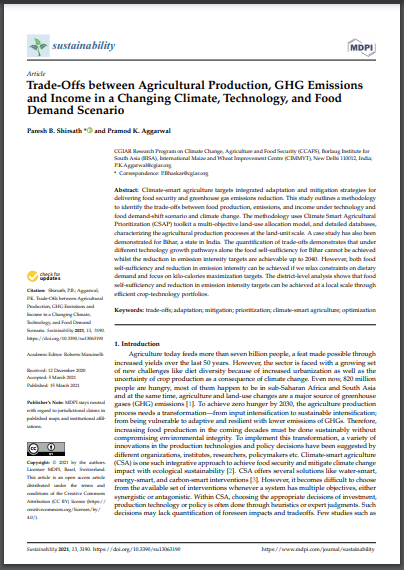Climate-smart agriculture targets integrated adaptation and mitigation strategies for delivering food security and greenhouse gas emissions reduction. This study outlines a methodology to identify the trade-offs between food production, emissions, and income under technology and food demand-shift scenario and climate change. The methodology uses Climate Smart Agricultural Prioritization (CSAP) toolkit a multi-objective land-use allocation model, and detailed databases, characterizing the agricultural production processes at the land-unit scale. A case study has also been demonstrated for Bihar, a state in India. The quantification of trade-offs demonstrates that under different technology growth pathways alone the food self-sufficiency for Bihar cannot be achieved whilst the reduction in emission intensity targets are achievable up to 2040. However, both food self-sufficiency and reduction in emission intensity can be achieved if we relax constraints on dietary demand and focus on kilo-calories maximization targets. The district-level analysis shows that food self-sufficiency and reduction in emission intensity targets can be achieved at a local scale through efficient crop-technology portfolios.

